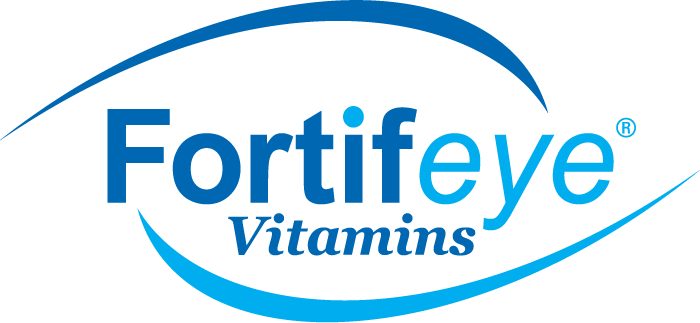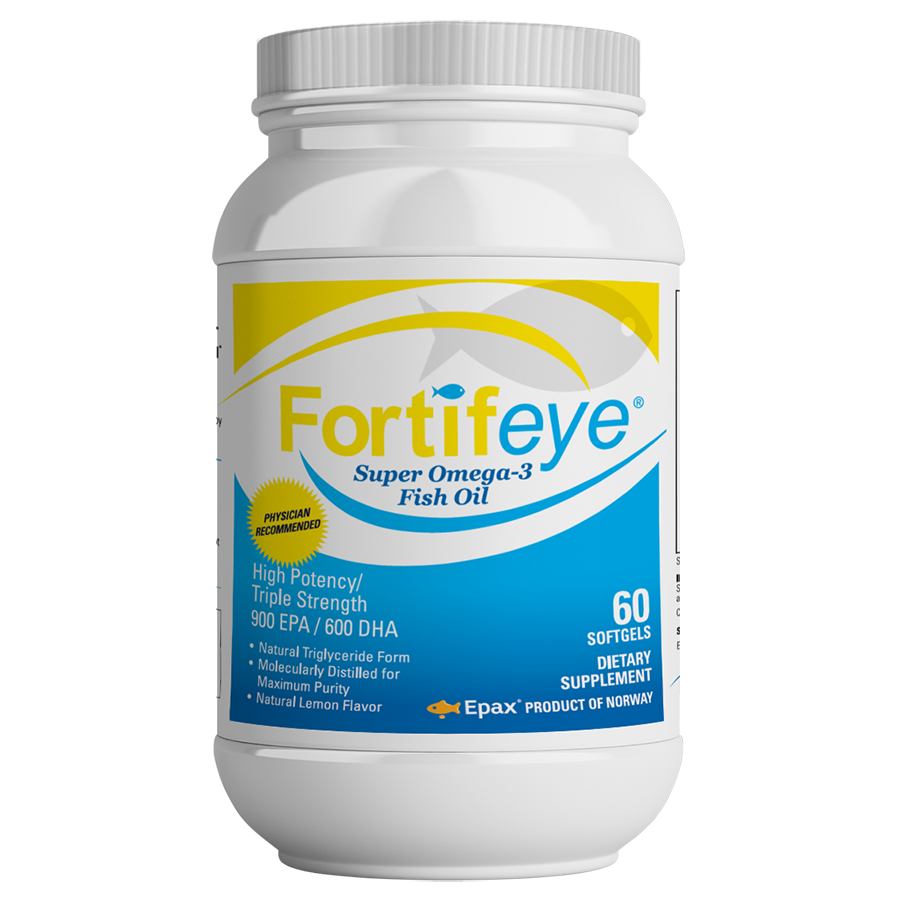Supporting Science
Latest Dry Eye and AstaReal Astaxanthin Studies:
Whey Protein Studies and Articles:
- View Super Protein Concentrate Product Profile
- View Amino Acid Profile
- 10 Evidence-Based Health Benefits of Whey Protein
- Effect of Whey Protein to Modulate Immune Response in Children With Atopic Asthma
- WPI- Wellness / Immune Health
- What Is Whey Protein?
- 8 Health Benefits of Whey Protein
- The Wonders of Whey Protein (pdf)
- Lactoferrin as a Natural Immune Modulator
- Emerging Health Properties of Whey Proteins and Their Clinical Implications (pdf)
- Whey Proteins and Its Impact on Human Health Nutrition: Review
AstaReal Articles:
- AstaReal_Muscle Recovery Infographic_Digital_FINAL_P
- AstaReal_Muscle_Endurance_Digital (1)
- Muscle Health Endurance and Recovery Sellsheet FINAL with disclaimer 8-3018
- Typical_Amino_Acid_Profile_-_Mineral_Acid_Whey_Protein_Concentrates
- AstraReal Sports Nutrition (pdf)
- Support Cognitive Function with Astareal® Astaxanthin (pdf)
- Immune Protective Health Formulation clinical support (pdf)
- Improve Muscle Endurance and Muscle Recovery with Astareal (pdf)
- Amazing Athletic Enhancing Properties of Astaxanthin at Any Age (pdf)
- Benefits of AstaReal Astaxanthin for Accommodation_Aging Eyes
- Optometrists See Outstanding Results with Breakthough Dry Eye Treatment (pdf)
- Finally: Optometrists Find A Powerful Solution For Blue Light Exposure And Digital Eye Strain (pdf)
- AstaReal’s Nutraceutical Newsletter, April 2020 (pdf)
- Building Strength, Endurance, and Mobility Using An Astaxanthin Formulation With Functional Training In Elderly (pdf)
- Astaxanthin May Help To Stop Muscle Atrophy As We Age (pdf)
- Clinical Evidence That Taking One to Two Fortifeye Focus Daily will Promote a Healthy Immune System (pdf)
- Latest Science Behind the Immune Boosting Properties Of Astaxanthin (pdf)
- Most Innovative & Scientific Ingredient of the Era by ENAC (pdf)
Creatine Articles:
- How Creatine Helps You Gain Muscle and Strength
- Effect of creatine supplementation during resistance training on lean tissue mass and muscular strength in older adults
- Effects of Creatine Supplementation on Performance and Training Adaptations
- Summary of Creatine
- Will Creatine Boost Your Gains?
- Should I use creatine supplements?
- Effects of creatine supplementation on performance and training adaptations
- Effectiveness of Creatine Supplementation on Aging Muscle and Bone: Focus on Falls Prevention and Inflammation (pdf)
Collagen Protein Articles:
- See how the 10 grams of SOLUGEL™ Collagen in the Fortifeye Fit can support Skin, Hair, Nails, Tendons, Ligaments, Joints and Bones
- Top 6 Benefits of Taking Collagen Supplements
- What to know about collagen supplements
- Significant Amounts of Functional Collagen Peptides Can Be Incorporated in the Diet While Maintaining Indispensable Amino Acid Balance
- Collagen: What the Science Says
- Can Collagen Supplements Really Reduce Signs of Aging?
- Collagen: The Master Protein
Betaine Anhydrous Articles:
Branch Chain Amino Acids Articles:
- 5 Proven Benefits of BCAAs
- Health benefits of BCAAs
- Metabolic and Physiological Roles of Branched-Chain Amino Acid
- Branched Chain Amino Acids Are Associated With Muscle Mass in Functionally Limited Older Adults
- Isolated branched-chain amino acid intake and muscle protein synthesis in humans
- Branched Chain Amino Acids and Muscle Atrophy Protection
- Branched Chain Amino Acids
L-Citraline Articles:
- Should You Take Citrulline Supplements?
- L-Citrulline Supplementation-Increased Skeletal Muscle PGC-1α Expression Is Associated With Exercise Performance and Increased Skeletal Muscle Weight
- L-Citrulline Protects Skeletal Muscle Cells from Cachectic Stimuli through an iNOS-Dependent Mechanism
- 8 Science-Backed Benefits of L-Citrulline
Velositol Articles:
Superfood Articles:
- UC Davis Study Shows Spirulina Boosts Immune System
- The effects of Spirulina on anemia and immune function in senior citizens
- 10 Health Benefits of Spirulina
- 10 Proven Health Benefits of Blueberries
- Review of the Health Effects of Berries and Their Phytochemicals on the Digestive and Immune Systems
- Recent Research on the Health Benefits of Blueberries and Their Anthocyanins
- Barleygrass
- Health Benefits of Wheatgrass & Barley Grass
- What are the health benefits of kale?
- Top 14 Health Benefits of Broccoli (healthline.com)
- 23 Incredible Benefits of Broccoli | Organic Facts
- Strawberries can toughen immune system
- 9 Potential Health Benefits of Strawberries
- Pineapple: Nutrition and benefits (medicalnewstoday.com)
- 8 Impressive Health Benefits of Pineapple (healthline.com)
- 10 Evidence-Based Health Benefits of Cinnamon
- Cinnamon for the Immune System
- Adaptogenic or Medicinal Mushrooms (uspharmacist.com)
- PeakO2® – Endurance Ingredient from Compound Solutions : Compound Solutions
- Can Adaptogens Make The Difference? – PHD
- 12 Unexpected Health Benefits of Mushrooms – Page 3 of 13 (veryhealthy.life)
Resveratrol Articles:
- https://www.ncbi.nlm.nih.gov/pmc/articles/PMC4848669/
- https://www.nih.gov/news-events/nih-research-matters/how-resveratrol-may-fight-aging
- https://www.ncbi.nlm.nih.gov/pubmed/24652235/
- https://www.pharmacytimes.com/news/resveratrolbased-nutraceutical-improves-symptoms-of-agerelated-macular-degeneration
- https://www.wellnessresources.com/studies/resveratrol-and-eye-health
- https://www.healthline.com/nutrition/resveratrol#section2
Macular Defense Articles:
Macular Degeneration Supporting Nutritional Science
Scientific evidence for the development of Zinc Free Fortifeye Macular Defense
Zinc may be good or bad for macular degeneration CFH and ARMS2 genetic polymorphisms predict response to antioxidants and zinc in patients with age-related macular degeneration – PubMed (nih.gov)
Lange Survival Diet recommended for ARMD patients: The Lange Survival Diet – Dr. Michael Lange (drmichaellange.com)
carotenoids are beneficial for macular degeneration Carotenoids in Age-related Maculopathy Italian Study (CARMIS): two-year results of a randomized study – PubMed (nih.gov)
Folate and B vitamins for macular degeneration: Dietary folate, B vitamins, genetic susceptibility and progression to advanced nonexudative age-related macular degeneration with geographic atrophy: a prospective cohort study – PubMed (nih.gov)
Folate and B12 reduced risk of Macular Degeneration: Folic Acid, Pyridoxine, and Cyanocobalamin Combination Treatment and Age-Related Macular Degeneration in Women: The Women’s Antioxidant and Folic Acid Cardiovascular Study | Macular Diseases | JAMA Internal Medicine | JAMA Network
Folic acid, B12 and B6 reduce risk of Macular Degeneration: Folic Acid, Vitamin B6, and Vitamin B12 in Combination and Age-related Macular Degeneration in a Randomized Trial of Women (nih.gov)
Elevated homocysteine and low B12 may be risk for macular degeneration: Homocysteine and the risk of age-related macular degeneration: a systematic review and meta-analysis – PubMed (nih.gov)
Vitamin D important nutrient for Macular Degeneration: Vitamin D and Age-Related Macular Degeneration – PubMed (nih.gov)
Vitamin D and ARMD: Vitamin D Levels May Affect Macular Degeneration Risk (webmd.com)
Bilberry for Macular degeneration: [Dietary supplementation with bilberry extract prevents macular degeneration and cataracts in senesce-accelerated OXYS rats] – PubMed (nih.gov)
Alcar( acetyl l carnitine) for macular degeneration: The aging eye and the role of L-carnitine and its derivatives – PubMed (nih.gov)
COQ-10 for Macular Degeneration: Therapeutic Potential of Co-enzyme Q10 in Retinal Diseases – PubMed (nih.gov)
alpha lipoic acid improves vision in macular degeneration: https://pubmed.ncbi.nlm.nih.gov/28762311/#:~:text=Results%3A%20CoQ10%20has%20been%20applied,with%20age%2Drelated%20macular%20degeneration.
Astaxanthin and eye disease : Clinical Applications of Astaxanthin in the Treatment of Ocular Diseases: Emerging Insights (nih.gov)
Taurine and eye disease: Taurine and oxidative stress in retinal health and disease (nih.gov)
Vitamins do benefit macular degeneration confirmed by NIH: NIH study confirms benefit of supplements for slowing age-related macular degeneration | National Institutes of Health (NIH)
Eye Health Studies:
Omega-3 Articles:
Omega 3 linked to a 48% decrease in sight threatening diabetic retinopathy
https://pubmed.ncbi.nlm.nih.gov/27541690/
Higher levels of omega-3 acids in the blood increases life expectancy by almost five years
A 1% increase in this substance in the blood is associated with a change in mortality risk similar to that of quitting smoking.
Consuming omega-3 fatty acids could prevent asthma, study suggests
New research suggests that a higher dietary intake of long chain omega-3 fatty acids in childhood may reduce the risk of developing subsequent asthma, but only in children carrying a common gene variant.
Authoritative new analysis links increased omega-3 intake to cardioprotection and improved cardiovascular outcomes
Study indicates that EPA and DHA supplementation reduces multiple types of cardiovascular risk
A new study published in Mayo Clinic Proceedings provides the most comprehensive analysis of the role of omega-3 dosage on cardiovascular prevention to date. The meta-analysis, which is an in-depth review of 40 clinical trials, provides authoritative evidence for consuming more EPA (eicosapentaenoic acid) and DHA (docosahexaenoic acid) omega-3 fats.
Analysis predicts purified fish oil could prevent thousands of cardiovascular events
Researchers have conducted a statistical analysis that predicts more than 70,000 heart attacks, strokes and other adverse cardiovascular events could be prevented each year in the U.S. through the use of a highly purified fish oil therapy.
Degenerative rotator cuff tears are associated with a low Omega-3 Index
Patients with full thickness degenerative rotator cuff tears had a significantly lower Omega-3 Index than controls without rotator cuff tendinopathy. Whether a lower Omega-3 Index represents an independent risk factor for degenerative rotator cuff tears should be further investigated, e.g. in a longitudinal study.
View Full Article on PLEFA.com
A Meta-Analysis of Randomized Controlled Trials and Prospective Cohort Studies of Eicosapentaenoic and Docosahexaenoic Long-Chain Omega-3 Fatty Acids and Coronary Heart Disease Risk
Objective: To conduct meta-analyses of randomized controlled trials (RCTs) to estimate the effect of eicosapentaenoic and docosahexaenoic acid (EPAþDHA) on coronary heart disease (CHD), and to conduct meta-analyses of prospective cohort studies to estimate the association between EPAþDHA intake and CHD risk.
EPA and Treatment of Major Depressive Disease
Peet,Malcolm; Stokes, Caroline
Omega-3 fatty acids in the treatment of psychiatric disorders
Drugs 2005;65:1051-1059
The importance of omega-3 fatty acids for physical health is now well recognised and there is increasing evidence that omega-3 fatty acids may also be important to mental health. The two main omega-3 fatty acids in fish oil, eicosapentaenoic acid (EPA) and docosahexaenoic acid (DHA) have important biological functions in the CNS. DHA is a major structural component of neuronal membranes, and changing the fatty acid composition of neuronal membranes leads to functional changes in the activity of receptors and other proteins embedded in the membrane phospholipid. EPA has important physiological functions that can affect neuronal activity. Epidemiological studies indicate an association between depression and low dietary intake of omega-3 fatty acids, and biochemical studies have shown reduced levels of omega-3 fatty acids in red blood cell membranes in both depressive and schizophrenic patients.Five of six double-blind, placebo-controlled trials in schizophrenia, and four of six such trials in depression, have reported therapeutic benefit from omega-3 fatty acids in either the primary or secondary statistical analysis, particularly when EPA is added on to existing psychotropic medication. Individual clinical trials have suggested benefits of EPA treatment in borderline personality disorder and of combined omega-3 and omega-6 fatty acid treatment for attention-deficit hyperactivity disorder. The evidence to date supports the adjunctive use of omega-3 fatty acids in the management of treatment unresponsive depression and schizophrenia. As these conditions are associated with increased risk of coronary heart disease and diabetes mellitus, omega- 3 fatty acids should also benefit the physical state of these patients. However, as the clinical research evidence is preliminary, large, and definitive randomised controlled trials similar to those required for the licensing of any new pharmacological treatment are needed
DRY EYE SYNDROME – DES
People with DES complains most frequently of a scratchy or foreign body sensation. Redness, pain, itching, inability to produce tears, light sensitivity, and blurred vision with difficulty driving after dark are common symptoms. The symptoms are located mainly to the pain sensitive cornea.
Recent animal experiments have demonstrated that DES is not exclusively a disease located to the cornea since inflammatory cells and immunological chemical mediators were found in the tear fluid. Since cornea does not contain tissue engaged in an inflammatory process the lacrimal gland and the conjunctiva have to participate in the syndrome even though symptoms relate to cornea.
A number of controlled clinical studies have been published where these fatty acids have been given in a placebo-controlled design. Rahul Bhargava and colleagues (1) included 264 DES subjects given 1g daily of marine omega3 fatty acids mainly eicosapentaenoic acid (EPA) and compared effects on symptoms, tear production and corneal cell integrity. A large control group of 254 individuals were given matching placebo. After three months, there was a significant reduction in symptom score in the omega3 group along with improvement in tear production and corneal cell integrity. Kawatita K et al (2) included 27 DES patients in a study providing half of the group with a product containing 1.3g of EPA and 0,5 g of docosahexaenoic acid (DHA) daily for 12 weeks. Symptoms were significantly reduced in the intervention group.
Kangari H and collaborators included sixty-four patients with dry eye symptoms (3). The subjects were randomized into two groups: 33 persons in the treatment group given 2 capsules of omega-3 (each containing 180 mg EPA and 120 mg DHA and 31 persons in the placebo group. The tear break-up time (TBUT), Schirmer’s score, and Ocular Surface Disease Index (OSDI) were measured 1 month after the intervention. Repeated-measures analysis of variance showed that improvements in TBUT, OSDI, and Schirmer’s scores were significantly better in the treatment group than in the placebo group. The changes in the treatment and placebo groups were 71% and 3.3% for TBUT (P<0.001), 26% and 4% (P=0.004) for dry eye symptoms, and 22.3% and 5.1% for Schirmer’s score (P=0.033), respectively. In conclusion, his study demonstrated that omega-3 fatty acids for 30 days was associated with a decrease in the rate of tear evaporation, an improvement in dry eye symptoms, and an increase in tear secretion.
In another study by Bhargava R and Kumar P 496 contact lens carriers with DES were randomly allocated to treatment with marine omega3 fatty acids (0.6g daily) or placebo for six months (4). The study demonstrated a significant improvement in dry eye symptoms and an increase in tear secretion in the omega3 treated group. The Bhargava group included 428 computer workers with DES in another study (5). Half the group were given the same dose of omega3 fatty acids as in study 7. The rest were provided with matching placebo capsules and followed for three months. There was a significant improvement in symptoms followed by increased tear production in the active treatment group. A recent study by Bhargava R and collaborators evaluated the effect of higher omega 3 fatty acid dose than in their previous studies namely 2,400 mg/day for 45 days on dry eye symptoms, tear production, stability, and conjunctival cytology in young and middle-aged visual display terminal (VDT) users (6). It was a randomized, double-blind, interventional study where 256 VDT users were randomized to receive omega-3 while 266 subjects received matching placebo capsules. Patients were evaluated at baseline, 30 days, and 45 days. The primary outcome measure was an improvement in dry eye symptoms. Secondary outcome measures were improvement in the Nelson grade on conjunctival impression cytology, Schirmer test values, and tear film breakup time (TBUT). In the omega3 group, the mean symptom score differed significantly between active treatment and placebo (P<0.005) as did the TBUT and Nelson grade evaluation. Schirmer test values did not differ significantly after adjustment for multiple comparisons. Consumption of 2,400 mg/day of O3FA supplement improved symptoms, tear stability, and conjunctival cytology but not tear production in symptomatic VDT users.
In a meta-analysis of published studies using a randomized, placebo-controlled design, Liu A and Yi J included a total of 790 participants in seven independent studies published between 2007 and 2013 (8). The authors concluded that based on the experience from these studies Omega3 fatty acid seemed to offer an effective therapy for DES.
Article below posted on the European Journal of Clinical Nutrition website.
Association of blood levels of marine omega-3 fatty acids with coronary calcification and calcium density in Japanese men
Clinical trials of eicosapentaenoic acid (EPA) among high-risk groups in Japan in which consumption of mairne-omega-3 fatty acids (OM3) is much higher than other countries showed slower progression of coronary atherosclerosis. We aimed to determine the cross-sectional associations of coronary artery calcification (CAC) and calcium density with OM3, EPA, and docosahexaenoic acid (DHA), two principal OM3, in the general population in Japan.


